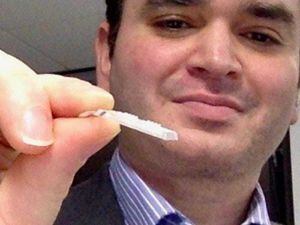Researchers claim ‘world’s first’ coronavirus vaccine patch
The team from Swansea University say the patch could speed up the containment of future Covid-19 outbreaks

The world’s first coronavirus vaccine “smart patch” is being developed in Wales, researchers have said.
The device, which works like a nicotine patch, is designed to allow patients to self-administer the vaccine before being able to monitor their body’s response to it.
The small patch will use tiny microneedles, which are measured in millionths of a metre, to break the skin barrier of a patient and deliver the vaccine in a less invasive way than a traditional hypodermic needle.
The real-time measuring of the vaccine’s effectiveness is hoped to speed up the containment of future Covid-19 outbreaks.
Researchers at Swansea University say the devices would be easy to distribute and low-cost to manufacture, with scope to expand the work to apply to other infectious diseases in the future.
A prototype will be developed by the end of March with the aim of having it put forward for clinical trials and then made commercially available within three years.
He added: “The real-time nature of the platform will mean rapid results allowing faster containment of the Covid-19 virus. This low-cost vaccine administration device will ensure a safe return to work and management of subsequent Covid-19 outbreak waves.
“Beyond the pandemic, the scope of this work could be expanded to apply to other infectious diseases as the nature of the platform allows for quick adaptation to different infectious diseases.
“We are currently getting the platform ready and we hope to do human clinical studies on transdermal delivery with our existing partners at Imperial College London, in preparation for final implementation.”
The project, titled Smart Vaccine Devices For Delivery Of Covid-19 Vaccination, is being funded by the Welsh Government and the European Union’s European Regional Development Fund.






